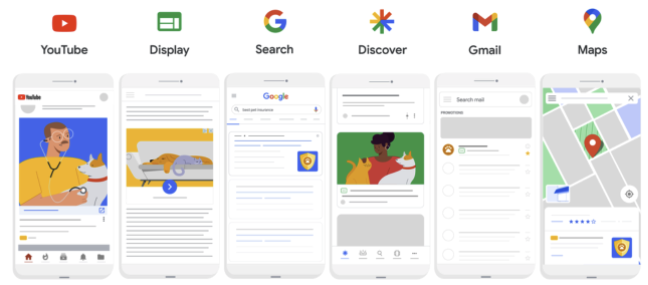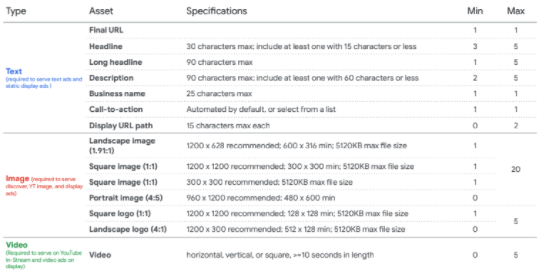Performance Max campaigns from Google
Performance Max is the newest smart bidding campaign type released by Google that has left its beta stages and is now usable by everybody since the 2nd of November. But what can we expect from it and what are some best practices? That will be discussed in the following article
Performance Max in a nutshell is focused on maximizing your marketing goals by using machine learning and an asset group that can serve on all Google placements (see image 1)

This gives your campaign enormous flexibility in range & placements where this campaign can reach out to potential customers. This should in turn result in better performance for your campaign as it can touch customers at the right time and place to have them convert.
To start setting up this campaign, you’ll have to give the following information to the algorithm:
- A goal
- (a product feed)
- Daily budget
- Bidding strategy (Max conversion or Max conversion value with possible CPA or ROAS target)
- Location
- Languages
- (Final URL expansion: this is like a DSA and will allow your campaign to alter its Final URL to one that is more relevant to the customer)
- Assets
- (Audience signal: This is not a targeting option but allows you to give the campaign an idea on what type of customer you would like to target)
To have access to all these placements, you’ll need the correct assets. Below you can find the minimum & maximum assets that you can use for your campaign (image 2). Some things to keep in mind is that to get an ad strength of good or higher, you’ll need more and different types of assets to give the algorithm as much room as possible.

Best Practices
So now you know what you need to set-up the Performance Max campaign but how can you make sure that your set-up is the best possible? Look no further as we’ll be discussing some best practices & important things to keep in mind when trying out this new campaign type.
First off, it is highly recommended to have this campaign type run on top of existing campaigns. While it can serve all placements, Google recommends to see this as an on-top campaign type to run alongside your search & display campaigns. An important side note has to be made here. If you are to run a Performance Max campaign in the same account as Smart Shopping and you target the same location, the Performance Max will cannibalize your Smart Shopping as the algorithm will give priority to the highest ad rank which in this case will be the Performance Max campaign.
It is also important to give the algorithm enough time to learn to optimize. It is therefore recommended to have the campaign run at least 4-6 weeks before making changes & analyzing the performance. If needed you can swap out “low” performing assets after a minimum of 2 weeks. It is also recommended to mainly look at the most important KPI such as conversions & CPA or conversion value & ROAS when evaluating the campaign.
Best practices regarding automation are the following:
- Use goals that are similar to your other performance campaigns
- Have at least 15 conversions in the last 30 days
- Use Data-Driven attribution
- Avoid low budgets. If the campaign is constrained by budget, raise it until it is no more
- Set ROI goal to the past-30 historical account average
- Turn on Final URL expansion
All in all, we are very excited about what Performance Max will bring to us in the future and how it will change marketing campaigns into even more machine learning-driven campaigns that rely on data and AI to get the best results possible. Our first test was quite promising but we hope to see even better results once the algorithm can capture more data and learning. Especially now that Google has announced that Performance Max will become the next generation of Local & Smart Shopping campaigns in 2022, confirms according to us how much Google believes in their new campaign type.
